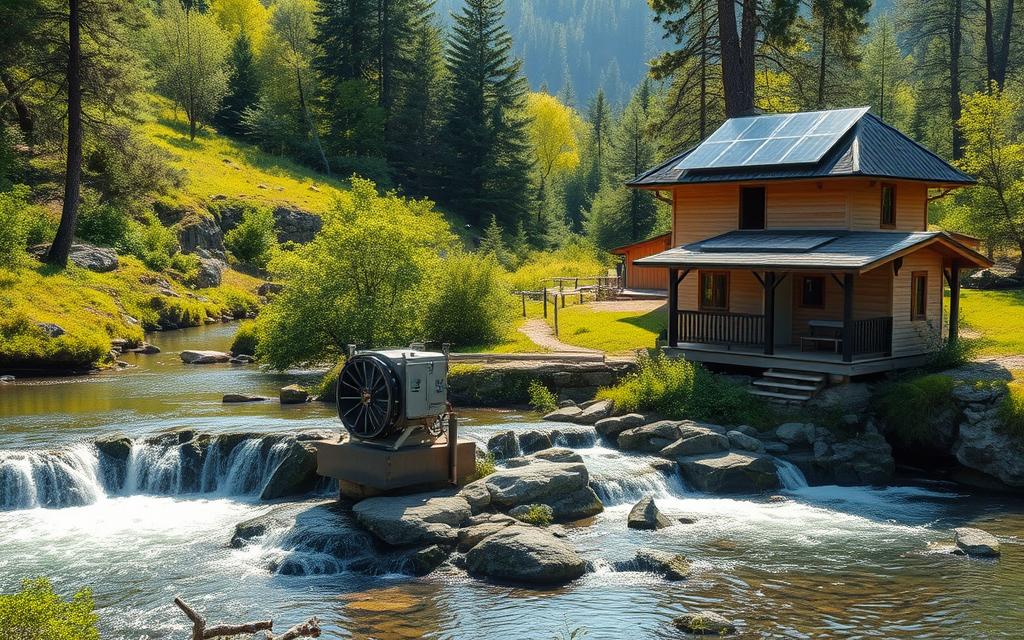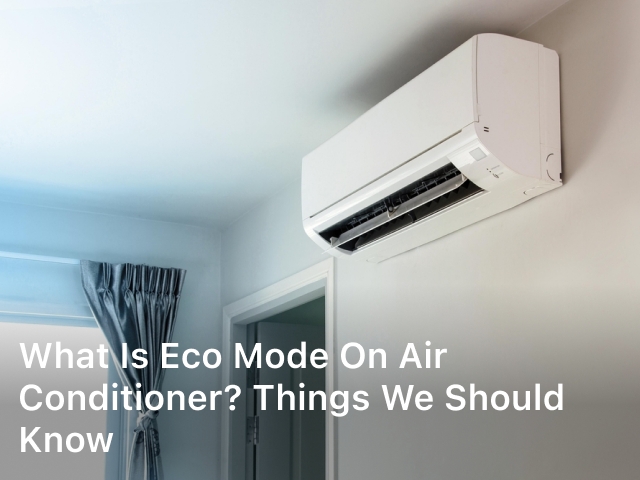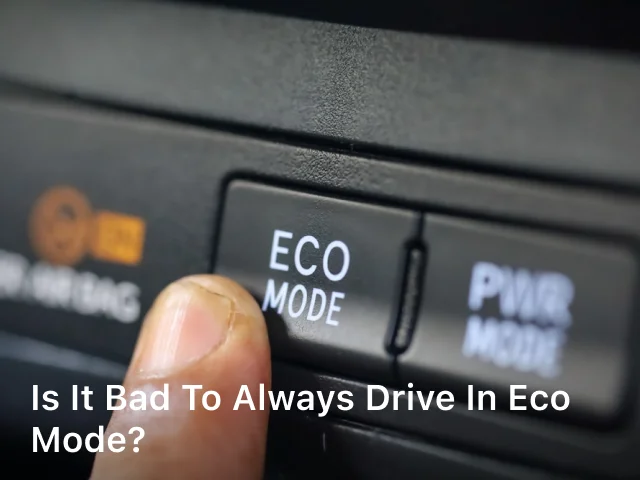Cheapest Renewable Energy for the Home | Save Big
Discover the cheapest renewable energy for the home. Cut costs, reduce your carbon footprint, and embrace eco-friendly living today!
In today’s world, finding sustainable energy solutions for our homes is crucial. Utility costs are going up, and we’re all thinking more about our environmental impact. Many of us want cost-effective renewable energy options.
The idea of energy-efficient homes is not just about saving the planet. It’s also about saving money. This journey into green energy options will show us the most affordable ways to use renewable energy at home. It’s good for our wallets and the planet.
Introduction to Renewable Energy for Homes
As we move towards a more sustainable world, it’s key for homeowners to learn about renewable energy basics. Using alternative energy resources is good for the planet and can save money over time.
Renewable energy uses natural sources like solar, wind, and water. These options help us reduce our carbon footprint and make our planet greener.
- Solar Energy: Solar panels turn sunlight into electricity. They’re simple to set up and can cut down your electricity costs.
- Wind Energy: Small wind turbines can be placed on properties to capture wind power. They’re a great way to make clean energy and work well with other green systems.
- Hydropower: Homes near water can use small-scale hydropower systems. These systems provide steady, clean energy.
- Geothermal Energy: This method uses the Earth’s heat for heating and cooling. It’s a green and efficient choice for homes.
- Environmental Benefits: Eco-friendly home power cuts down on harmful emissions. This leads to cleaner air and a healthier environment.
- Economic Advantages: While it might cost more upfront, the savings on bills over time are worth it. Plus, there are government incentives and rebates to help with costs.
Choosing alternative energy resources for your home is a step towards a sustainable future. With many options, you can find the best fit for your lifestyle and energy needs.
Solar Power: Affordable and Abundant
Solar power is becoming a top choice for homeowners who want to use renewable energy. It’s affordable and plentiful, making it a popular choice for many. Let’s look at why solar power, with its advanced photovoltaic panels, is both affordable and a lasting solution.
Cost Effectiveness
Solar energy is very cost-effective. The upfront cost of a solar system is high, but the savings over time are worth it. Homeowners can cut their energy bills by up to 70%.
There are also many incentives like federal tax credits and state rebates. These incentives make solar power even more appealing. This financial advantage is why photovoltaic panels are becoming more popular.
Installation Process
The process of installing a solar system is simple but involves several steps. First, a team checks the roof and sunlight. Then, they design a system that meets the home’s energy needs.
The next step is installing the photovoltaic panels and connecting them to the home’s electrical system. This usually takes a few days, depending on the system’s size. After that, the system is checked and turned on, allowing homeowners to start saving on energy.
Maintenance and Longevity
Maintenance is key to keeping solar systems running well for a long time. Luckily, solar systems need very little upkeep. Just clean the panels and have them checked by experts now and then.
Most solar panels come with warranties of 20 to 25 years. This means a well-kept solar system can save a lot of energy for decades. This reliability is why solar power is a smart choice for homeowners.
Wind Energy for Residential Use
Harnessing wind energy is a great choice for eco-friendly homeowners. Thanks to tech advancements, small wind turbines are now a viable option for home use.
Small Wind Turbines
Small wind turbines are made for homes or small businesses. They come in various sizes and capacities, fitting different spaces. It’s key to look at their efficiency and space needs.
Wind speed and turbine height also affect energy output. This is important for home wind energy systems.
Cost and Installation
Buying small wind turbines costs money upfront. This includes the turbine, installation, and maintenance. Prices vary based on size, model, and installation complexity.
Looking into financial incentives like tax credits and rebates can help. These can lower the initial cost.
Comparing costs of different models is crucial. It helps make the right choice.
| Turbine Model | Power Capacity (kW) | Upfront Costs | Installation Fees | Total Cost |
|---|---|---|---|---|
| Turbine A | 1.5 | $5,000 | $3,000 | $8,000 |
| Turbine B | 3.0 | $10,000 | $4,000 | $14,000 |
| Turbine C | 4.5 | $20,000 | $5,000 | $25,000 |
Getting a certified installer ensures your system works well. Investing in wind power reduces your reliance on traditional energy. It also helps the environment.
Cheapest Renewable Energy for the Home: Hydropower
Hydropower is a cost-effective renewable energy source for homes. It uses the natural flow of water to generate power. This makes it a good choice for homes near water sources.
To set up a micro-hydroelectric system, we first check the water flow and terrain. We need a steady flow to produce enough energy. Then, we install the turbine and generator to turn water energy into electricity.
Hydroelectricity is efficient and reliable. It’s better than solar or wind energy because it’s always on. Plus, it’s cheap to maintain, making it a smart long-term investment.

But, hydropower isn’t for everyone. It works best for homes near rivers or streams. We also have to think about the environment and local laws when setting it up.
In summary, if you have access to water, a micro-hydroelectric system is a cheap and reliable choice. It can cut down on energy costs and help the environment if done right.
Biomass Energy: Turning Waste into Power
Biomass energy is a game-changer for turning waste into power. It converts organic waste into energy, cutting down our carbon footprint. This method is becoming more popular because it fits well with our current heating systems and supports sustainable fuel sources.
Biomass Options
Homeowners have many choices for biomass heating systems. The most common are wood pellets, wood chips, and other organic waste energy sources. Each option provides reliable and consistent heat, making them good alternatives to traditional fuels.
- Wood Pellets: Made from compacted sawdust and wood waste, wood pellets have high energy output and low moisture.
- Wood Chips: Sourced from forestry residue and wood debris, wood chips are larger but still effective for energy production.
- Organic Waste: Includes agricultural residues, food waste, and other biodegradable materials that can be turned into energy.
Cost and Sustainability
The cost of biomass heating systems varies, but there are long-term savings. Initial costs for biomass boilers or pellet stoves might be higher than traditional systems. Yet, using sustainable fuel sources can greatly reduce energy bills over time.
Biomass energy is also sustainable. It uses waste materials, reducing landfill waste and creating a renewable fuel source. This supports the global effort towards sustainable living.
Geothermal Energy: Bringing the Earth’s Heat to Your Home
Geothermal energy is a top choice for home heating and cooling. It uses the earth’s stable temperatures. This makes it a reliable and green option.
How It Works
Geothermal systems use ground source heat pumps. These pumps move heat between your home and the ground. In winter, they pull warmth from the earth to warm your home. In summer, they cool your home by releasing heat underground.
These systems are efficient and save money over time. They use the earth’s heat, reducing energy use. This also cuts down on fossil fuel use, making the environment cleaner.
Let’s compare geothermal systems to traditional heating and cooling:
| System | Energy Efficiency (COP) | Annual Operating Cost | CO2 Reduction (tons/year) |
|---|---|---|---|
| Geothermal Heating and Cooling | 4.0-5.0 | $500-$1000 | 5-8 |
| Traditional HVAC | 0.8-2.5 | $1500-$3000 | 0 |
Adding geothermal systems to your home is smart. They offer reliable heating and cooling. They also help the planet by using less energy and cutting carbon emissions.
Comparing Costs of Different Renewable Energy Sources
When we look at renewable energy for our homes, comparing costs is key. This helps us see how much money we’ll need to spend and how much we’ll save in the long run. Let’s explore these points further.
Initial Investment vs. Long-term Savings
Different renewable energy sources cost different amounts to start. Solar panels might cost more upfront but save a lot of money over time. They need little upkeep. Wind and biomass systems might be cheaper to begin but could cost more to keep running and fix.
Here’s a comparison:
| Energy Source | Initial Investment | Long-term Savings |
|---|---|---|
| Solar Power | High | Very High |
| Wind Energy | Moderate | High |
| Hydropower | High | Moderate |
| Biomass | Low | Moderate |
| Geothermal | High | Moderate to High |
Government Incentives and Rebates
Government incentives are crucial in lowering the cost of renewable energy. Renewable energy tax credits help homeowners with solar, wind, geothermal, and more. These credits can cut down the cost and speed up when you get your money back.
States and local governments also offer rebates to encourage renewable energy use. These rebates can greatly reduce the cost of starting up.
To get the most out of renewable energy, we should check out all the incentives and rebates available. This way, we can make our homes more energy-efficient and eco-friendly.
Integrating Multiple Renewable Energy Sources
Using hybrid energy systems in our homes makes our energy supply more reliable and steady. By mixing different renewable energy sources like solar and wind, we can use energy more efficiently. This way, if one source is down, others can pick up the slack, keeping energy flowing smoothly.
Diversifying renewable energy is not just about being reliable. It’s also about making the most of energy production at all times. Solar panels work best during the day, while wind turbines can keep going at night or when it’s cloudy. This mix of sources adapts to different situations, offering a flexible energy solution.
Setting up effective hybrid energy systems needs careful planning and investment. We must think about our location, the weather changes, and how much space we have for equipment. While it might cost a bit more upfront, the long-term savings and efficiency make it worth it.
Here’s a look at the benefits of using hybrid energy systems:
| Benefits | Solar | Wind | Combined Energy Solutions |
|---|---|---|---|
| Reliability | Medium | Medium | High |
| Energy Production | Daytime | Day and Night | 24/7 |
| Cost Efficiency | Low Initial Cost | Medium Initial Cost | High Long-term Savings |
Choosing combined energy solutions for our homes is a smart step towards a sustainable future. By blending different renewable energy sources, we boost our energy security and help the planet.
Conclusion
As we wrap up, the benefits of renewable energy for homes are clear. We can use solar panels, wind turbines, hydropower, and biomass energy. These options help reduce our environmental impact and save money on energy bills.
Each renewable energy source has its own benefits. This makes changing to renewable energy both possible and more accessible. The upfront cost can be worth it, thanks to government help.
It’s important to use more than one renewable energy source for better efficiency. The technology for renewable energy has improved a lot. Now, it’s easier than ever to start making our homes greener.
Want more eco-friendly tips and cost-saving ideas? Visit ecowarriornation.com for trusted advice and insights on sustainable living solutions!




